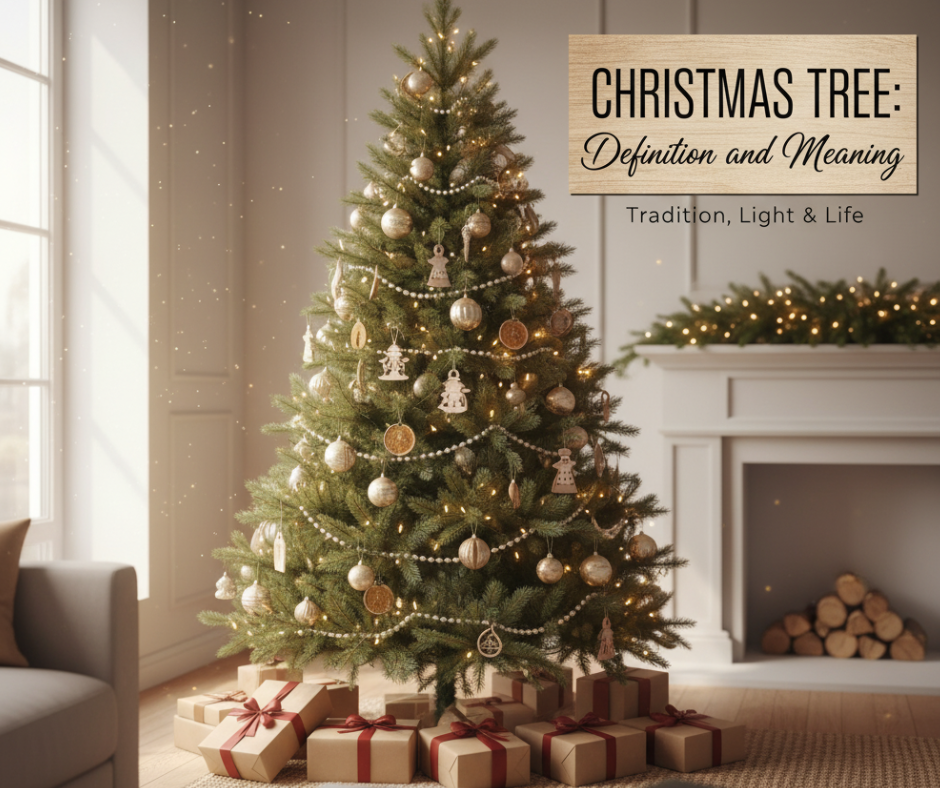The Christmas Tree Definition and Meaning is one of the most recognizable and cherished symbols of the holiday season. From family living rooms to town squares, its presence evokes warmth, tradition, and festive spirit. But beyond its visual beauty, the Christmas tree carries deep cultural and historical meanings that enrich its role in celebrations worldwide.
As 2025 approaches, exploring the definition and meaning of the Christmas tree provides a meaningful context for this iconic decoration. This article delves into its origins, symbolism, evolution, and why it remains central to holiday customs.
What is a Christmas Tree?
A Christmas tree is typically a decorated evergreen tree, such as a fir, spruce, or pine, displayed during the Christmas season. It is adorned with lights, ornaments, tinsel, and a topper, often a star or angel symbolizing the Star of Bethlehem or angelic presence.
The tree serves as a focal point for gathering, gift-giving, and festivity throughout the holiday period, signifying life, renewal, and joy.
Historical Origins
The tradition of using evergreens in winter celebrations predates Christianity, with ancient cultures like the Egyptians, Romans, and Druids incorporating evergreen boughs to represent eternal life during the harsh winters.
The modern Christmas tree tradition originated in Germany in the 16th century, with recorded usage of decorated trees in homes. It spread through Europe and North America in the 19th century, popularized by royal influence and cultural exchange.
Symbolism of the Christmas Tree
Eternal Life and Renewal
Evergreens remain vibrant year-round, symbolizing life’s endurance even in winter’s darkest months. This makes them a natural emblem of hope and renewal.
Spiritual Significance
The pointed shape is often interpreted as reaching towards heaven, symbolizing spiritual ascent and connection with the divine.
The Star and Angel Tree Toppers
These reflect biblical stories, with the star representing guidance by the Star of Bethlehem and angels symbolizing messengers of peace and goodwill.
Unity and Togetherness
The Christmas tree also represents familial unity and communal joy, serving as a gathering point for celebrations and traditions.
Evolution of the Christmas Tree
From simple natural trees adorned with candles and fruits to elaborate displays dripping with electric lights and themed ornaments, the Christmas tree has evolved with technology and cultural trends.
In 2025, trees are customized with sustainable decorations, smart lighting, and rich thematic elements blending modernity and heritage.
Christmas Tree Traditions Worldwide
Different cultures celebrate with unique twists:
-
In Sweden, the Christmas tree is often part of St. Lucia’s Day celebrations.
-
In the Philippines, parols (star-shaped lanterns) accompany tree décor.
-
In Mexico, poinsettias combine with Christmas trees for vibrant displays.
These variations highlight the tree’s universal appeal and adaptability.
Modern Trends in Christmas Trees 2025
-
Focus on eco-friendly trees and decorations.
-
Incorporation of smart, app-controlled lighting.
-
Use of artificial trees with realistic appearances.
-
Themed trees reflecting personal and cultural identities.
Why the Christmas Tree Remains Central
Its enduring presence is due to its ability to symbolize joy, hope, and the spirit of giving, making it a beloved tradition that bridges generations and cultures.
Read More: How to Choose the Right Artificial Christmas Tree: A Comprehensive Guide for 2025
Conclusion
Understanding the Christmas Tree Definition and Meaning deepens appreciation for this festive emblem. As 2025’s holiday customs evolve, the Christmas tree continues to shine as a beacon of life, light, and love.



Add a Comment